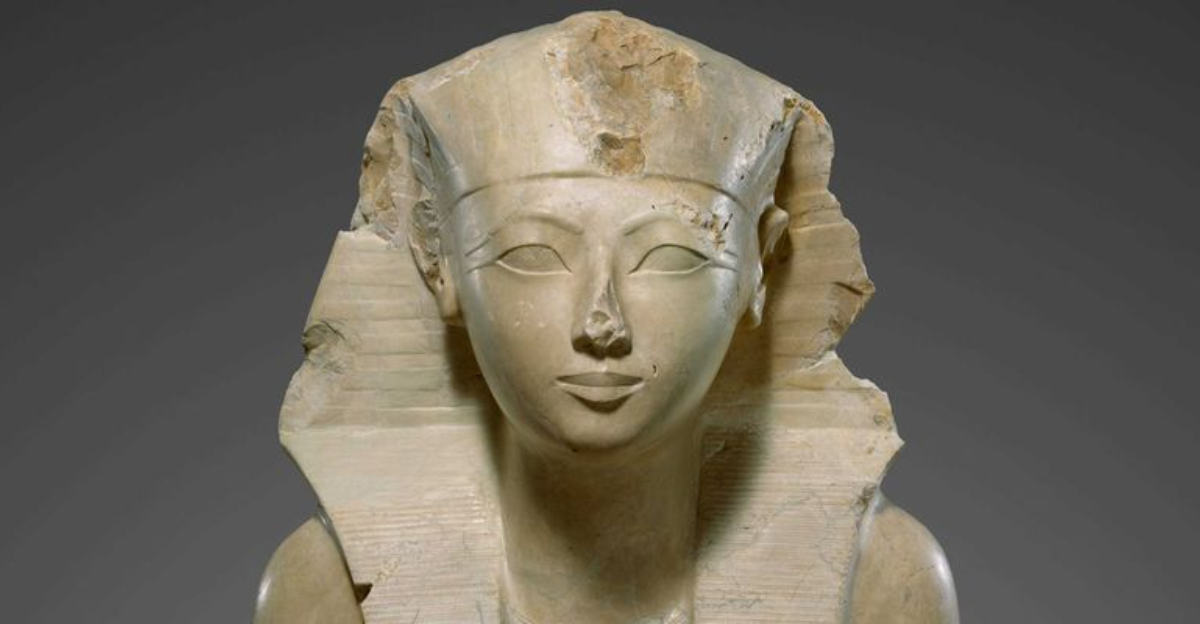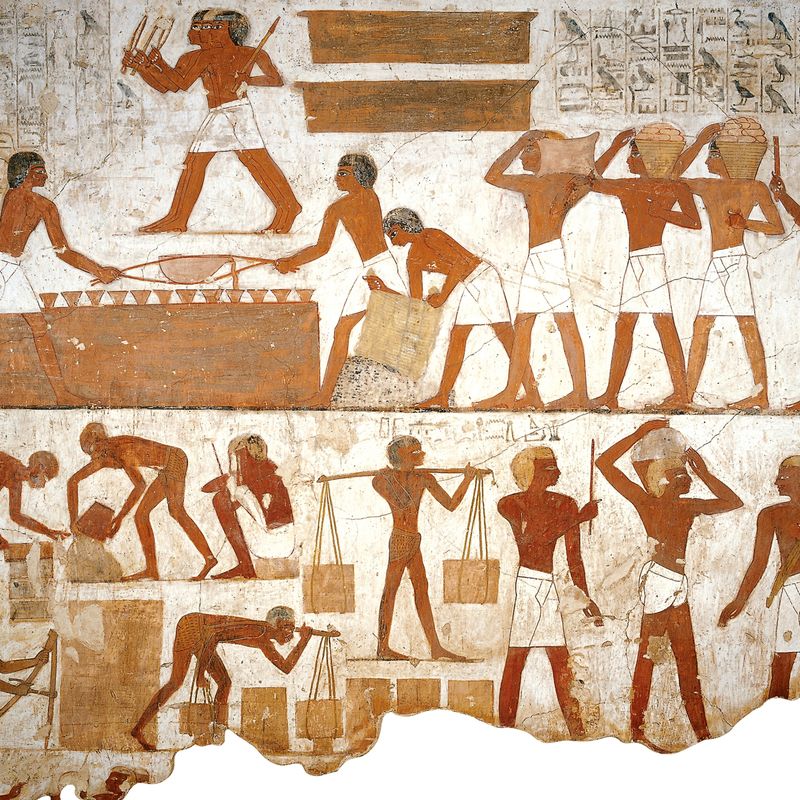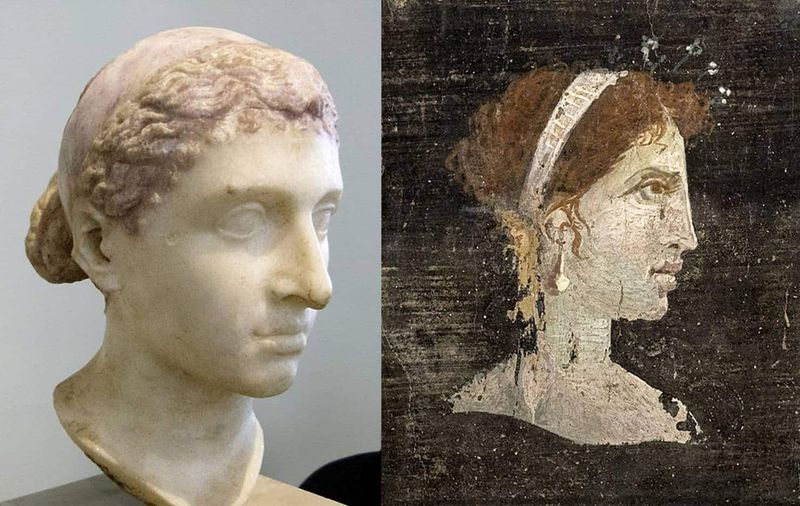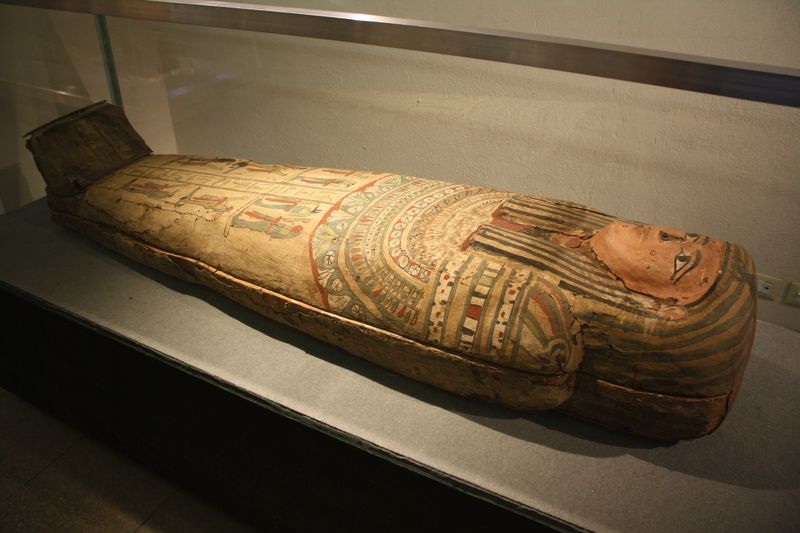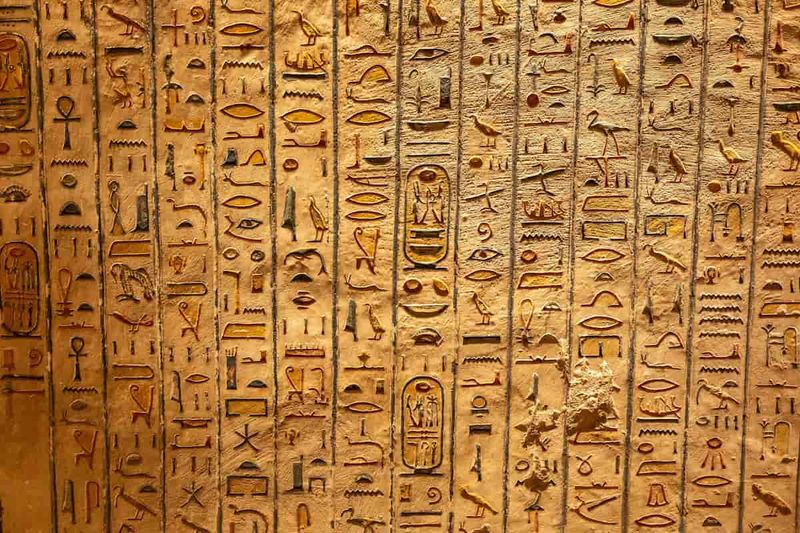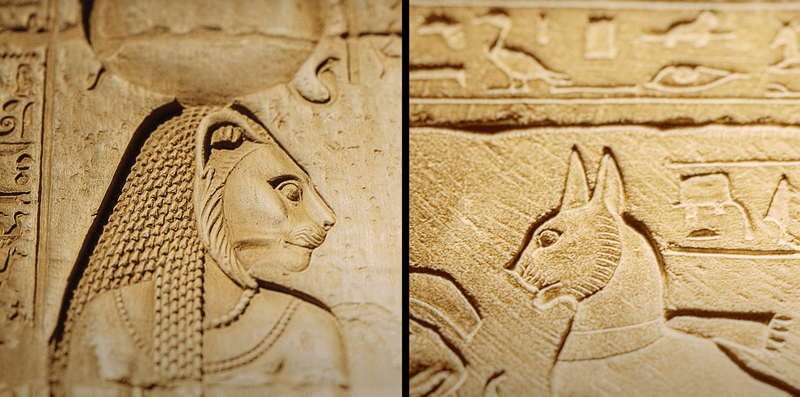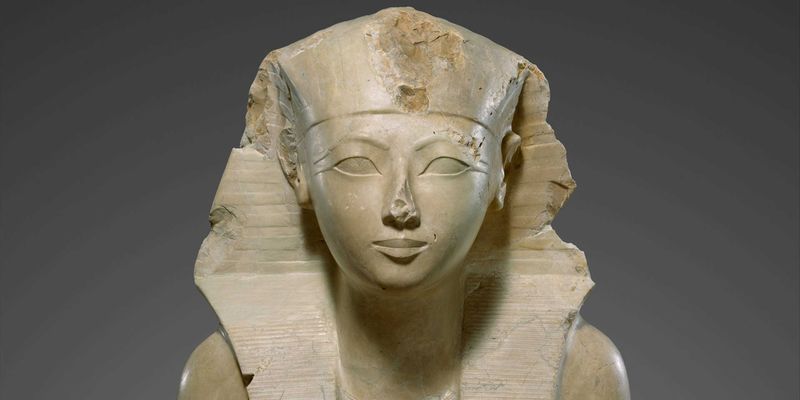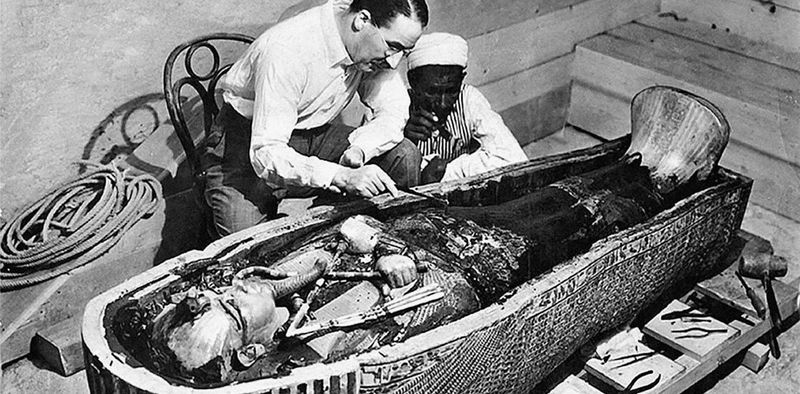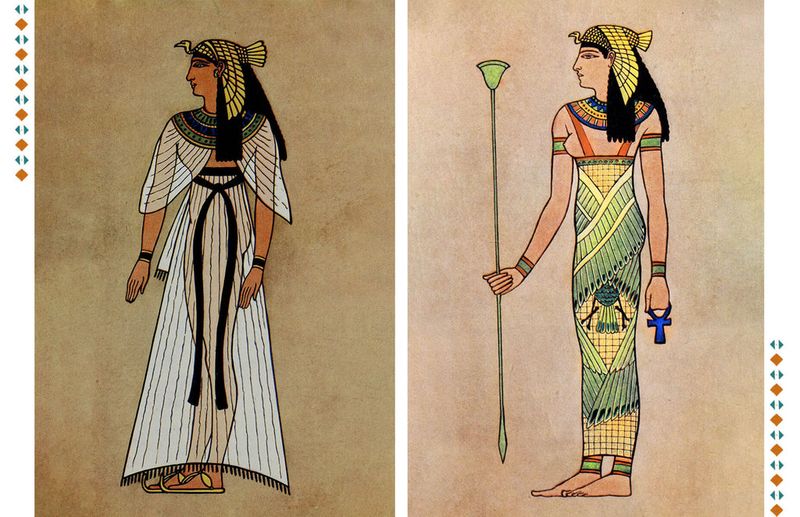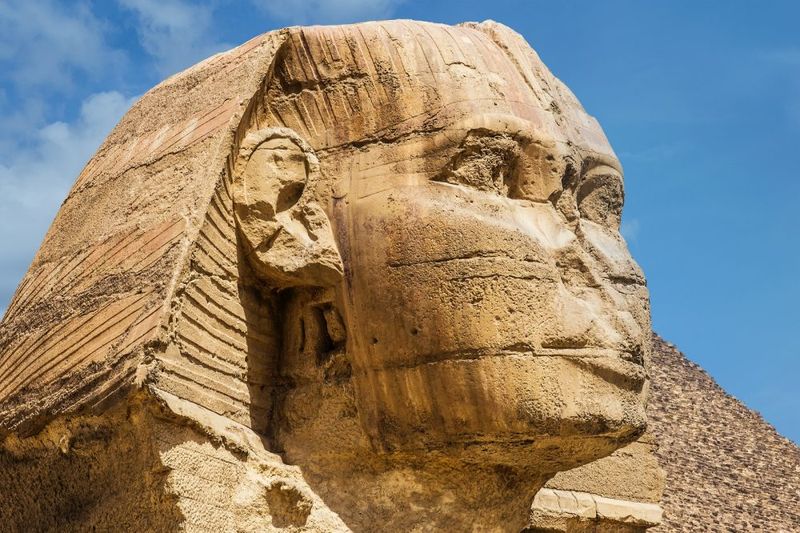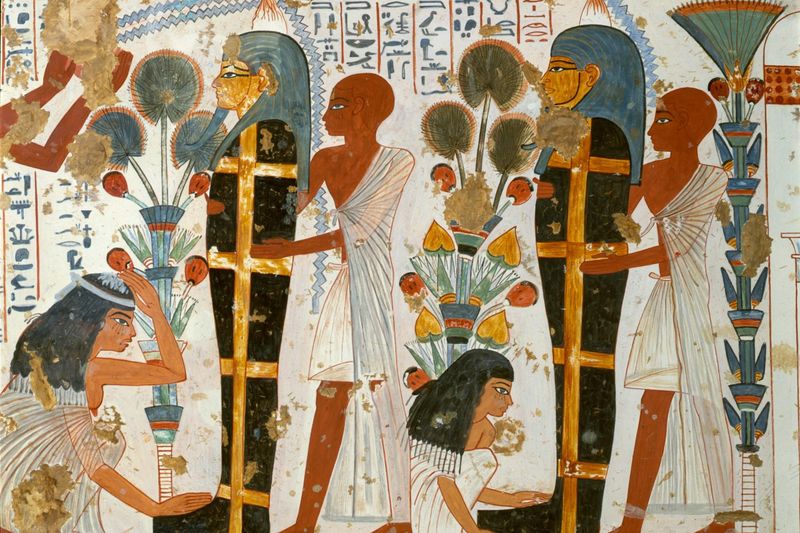Ancient Egypt has long fascinated the world, not just for its monumental pyramids and iconic pharaohs, but also for the rich tapestry of its culture. Unfortunately, pop culture has woven a web of myths and misconceptions about this civilization, leading many to believe in tales far removed from reality. From the workers who constructed the pyramids to the true nature of Egyptian queens, these myths persist, fueling misunderstandings about Egyptian history. In this blog post, we debunk ten of the dumbest things people still believe about Ancient Egypt, thanks to movies, games, and popular media.
1. The Pyramids Were Built by Slaves
The pyramids were not built by slaves as often portrayed in movies like ‘The Ten Commandments.’ Instead, they were constructed by skilled laborers who were considered respected workers of their time. These laborers received payment in the form of bread and beer, and were well-cared for with medical aid. Evidence suggests they were proud of their work and were even buried near the pyramids as an honor. Such treatment starkly contrasts with the harsh slave conditions often depicted, marking a significant misunderstanding propagated by pop culture imagery.
2. Cleopatra Was a Seductive White Woman
The image of Cleopatra, popularized by Elizabeth Taylor, as a seductress is misleading. Cleopatra was a queen of Greek-Macedonian descent and likely had a mixed heritage, including Persian and perhaps Egyptian roots. Known for her sharp intellect, Cleopatra was fluent in multiple languages and adept in politics and diplomacy. Her portrayal as merely a femme fatale diminishes her accomplishments as a ruler. Instead of relying on beauty, she wielded her intelligence and strategic prowess, defining her legacy far beyond the simplistic and often inaccurate portrayals in films and games.
3. Everyone Was Mummified
Contrary to the movies, not every Egyptian was mummified. Mummification was reserved for the elite who could afford such an elaborate process. Most Egyptians were buried in simple pits without the elaborate rituals. Animals, often depicted as mummified pets, were actually offerings to the gods. The belief that every Egyptian underwent this process is a misunderstanding fueled by media. Mummification was a privilege, not a common practice, reflecting a society with distinct class differences even in death. This separation underscores the need to differentiate reality from the dramatized portrayals seen in entertainment.
4. Hieroglyphs Are Just Picture-Writing
Hieroglyphs are often dismissed as simple picture-writing, a notion reinforced by adventurous films like Indiana Jones. In reality, they represent a complex writing system combining alphabetic, syllabic, and logographic elements. This sophisticated language was not limited to stone carvings but also included cursive forms used in daily writing. The misinterpretation of hieroglyphs as mere pictures diminishes their importance and complexity. Understanding hieroglyphs requires recognizing their role in recording Egyptian history and culture, far from the simplistic portrayals seen in popular media, where they are often reduced to mere symbols in treasure hunts.
5. Egyptians Worshipped Cats Like Gods
While cats held a special place in Egyptian society, they were not worshipped as gods. This misconception is often exaggerated in films like ‘Gods of Egypt.’ Cats were valued for their ability to control vermin and were considered protectors of the home. The goddess Bastet, associated with protection and family, was depicted as a lioness or a woman with a cat’s head, but this did not translate to everyday cats being deified. Harm to cats was a serious offense, reflecting their importance, but the idea of feline worship is largely a myth, exaggerated by popular culture.
6. All Pharaohs Were Men
The assumption that only men could be pharaohs is incorrect. Several women ruled Ancient Egypt, breaking gender norms of their time. Hatshepsut, for example, assumed the throne and ruled as a king, even wearing the traditional false beard. Nefertiti, known for her beauty, may have co-ruled Egypt with Akhenaten. Such women were powerful figures in Egypt’s history, challenging the male-dominated stereotypes perpetuated by films. These leaders’ stories highlight the diverse and often overlooked history of female pharaohs, reflecting a nuanced understanding of gender roles in ancient Egyptian society.
7. The Curse of the Pharaohs Is Real
The so-called ‘Curse of the Pharaohs’ is a sensational myth born from the discovery of Tutankhamun’s tomb. Media fueled hysteria with tales of mysterious deaths, overshadowing the scientific achievements of the excavation. Most involved in the tomb’s discovery lived long, healthy lives, debunking the idea of a supernatural curse. The notion of a curse makes for exciting storytelling but lacks historical basis. Instead, it reflects early 20th-century media’s penchant for drama and mystery, which has since influenced countless films and books, perpetuating a myth that has captivated imaginations worldwide.
8. Egyptians Only Wore White Linen
The stereotype that Egyptians only wore white linen is misleading. Historical evidence shows a penchant for colorful clothing and intricate designs. Wall paintings and artifacts depict garments dyed in bright hues and adorned with beads and gold. Such attire was not limited to the elite; even commoners enjoyed patterned fabrics. The vibrancy of Egyptian attire contrasts sharply with the monochrome depictions often seen in media. This preference for color underscores the creativity and cultural richness of ancient Egyptian society, challenging the simplistic portrayals that fail to capture the true essence of their fashion.
9. The Sphinx Has Hidden Chambers Full of Treasure
The idea that the Sphinx conceals hidden chambers filled with treasures is pure fantasy. Despite numerous explorations, no secret rooms have been uncovered within this iconic monument. The Sphinx was likely constructed as a grand royal statue, symbolizing power and protection rather than a mystical vault. The allure of hidden treasures makes for exciting fiction but lacks archaeological support. Such theories often overshadow the Sphinx’s true historical significance and cultural importance, fueled by imaginative stories in movies and literature that captivate audiences with promises of undiscovered wealth.
10. Ancient Egyptians Were Obsessed With Death
Rather than an obsession with death, Egyptians celebrated life. Tombs were filled with items like food, games, and cosmetics, intended to ensure comfort in the afterlife. The Book of the Dead was not a morbid text but a guide to navigating the afterlife successfully. This vibrant approach to death reflects a culture that valued life and sought to carry its joys into eternity. Such perspectives challenge the grim depictions often seen in media, portraying Egyptians as morose or obsessed with mortality rather than the life-affirming culture they truly embodied.
